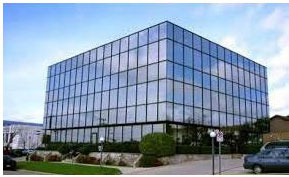FALSE ALARM PREVENTION FOR COMMERCIAL ESTABLISHMENTS
 Whether a large corporation or a small family owned business, commercial establishments share unique circumstances that often contribute to the overall false alarm problem. These circumstances include constant public access, sharing a building with other tenants, frequent visits by goods and service providers, opening and closing procedures, janitorial services, and bird and animal infiltration.
Whether a large corporation or a small family owned business, commercial establishments share unique circumstances that often contribute to the overall false alarm problem. These circumstances include constant public access, sharing a building with other tenants, frequent visits by goods and service providers, opening and closing procedures, janitorial services, and bird and animal infiltration.
Many businesses end up being fined by their local government for excessive false alarms. If the problem is ignored, those fines can add up quickly and become a burden to the business.
False alarms are a drain on community resources and affect everyone. False alarm fines can be avoided, and the following steps can be taken to reduce or eliminate false alarms in a business environment.
FALSE ALARM PREVENTION TIPS
- The number one cause of false alarms at opening and closing is employee error. Fully train new system users in the proper operation of the alarm system, and hold monthly refresher sessions for all employees. Be sure to include instruction on how to quickly cancel an accidental activation with the alarm company.
- If alarms at opening and closing continue to be a problem, contact the alarm company to see if the signal activation times established during the original installation are compatible with your needs, or if they should be adjusted. Also verify that the alarm company has the correct opening and closing times for the business on file.
- Don’t change pass codes and/or arming codes without advising all authorized users of the changes, including janitorial personnel. If it becomes necessary to quickly change a pass code, be sure to notify the alarm company of the change as soon as possible.
- Ensure all doors and windows are locked and secured before the system is armed. Look for items that may move within the “view” of your motion detectors, such as advertising banners or balloons, and relocate them as necessary.
- If you are having a system installed or upgraded in your business, give special consideration to the location of motion detectors in high bay areas with overhead doors, exhaust fans and ceiling vents, as these can allow entry for birds and other wildlife. Additionally, using monthly pest prevention services can help eliminate bugs and animals and reduce false alarms.
- Be sure that floor mounted contacts are not being used on overhead or rollup type doors. Use track mounted wide gap contacts on both sides of the door instead. Require activation of both contacts before the alarm is triggered.
- If you are installing a beam system, make sure you understand the maintenance requirements involved, and the frequency of maintenance necessary to keep it in good working order. Ask the alarm installer to explain fully how the system works, and what environmental issues may require further modifications be made.
- If your business requires hold-up protection, be sure everyone is trained in the proper use of that equipment, and in cancelling a false hold-up or panic activation as quickly as possible. Hold monthly training and refresher sessions on all installed alarm equipment, and include training on company procedures in the event of an actual robbery.
- Service and maintain the system regularly, and change the batteries annually. If the system is not working properly, contact the alarm company as soon as possible to have it repaired.
- If the system is old or outdated, have it replaced with a new system that conforms to SIA (Security Industry Association) or UL standards for false alarm prevention. Check with your insurance agent to see if upgrading to the new equipment will result in any rebates on your annual policy.